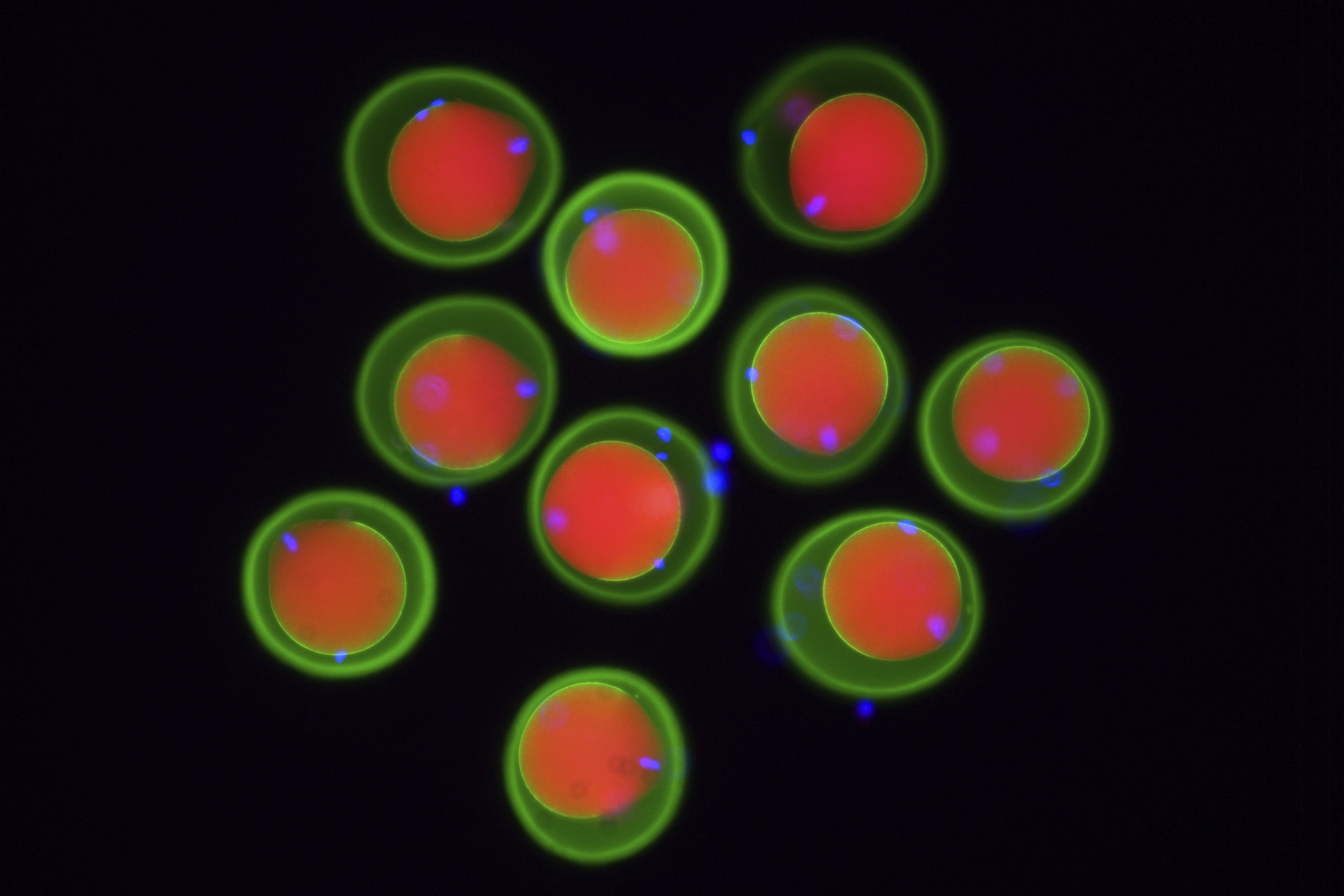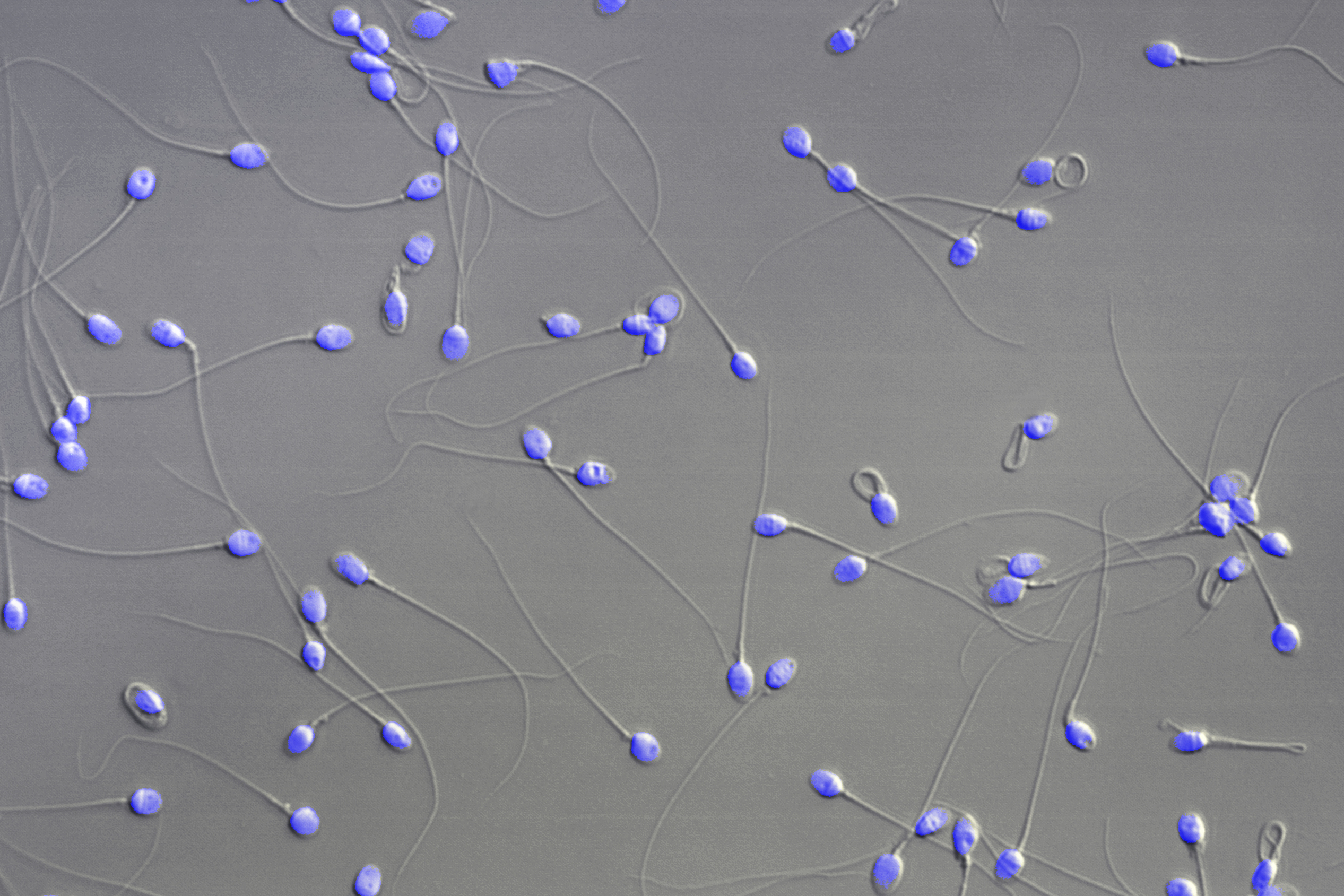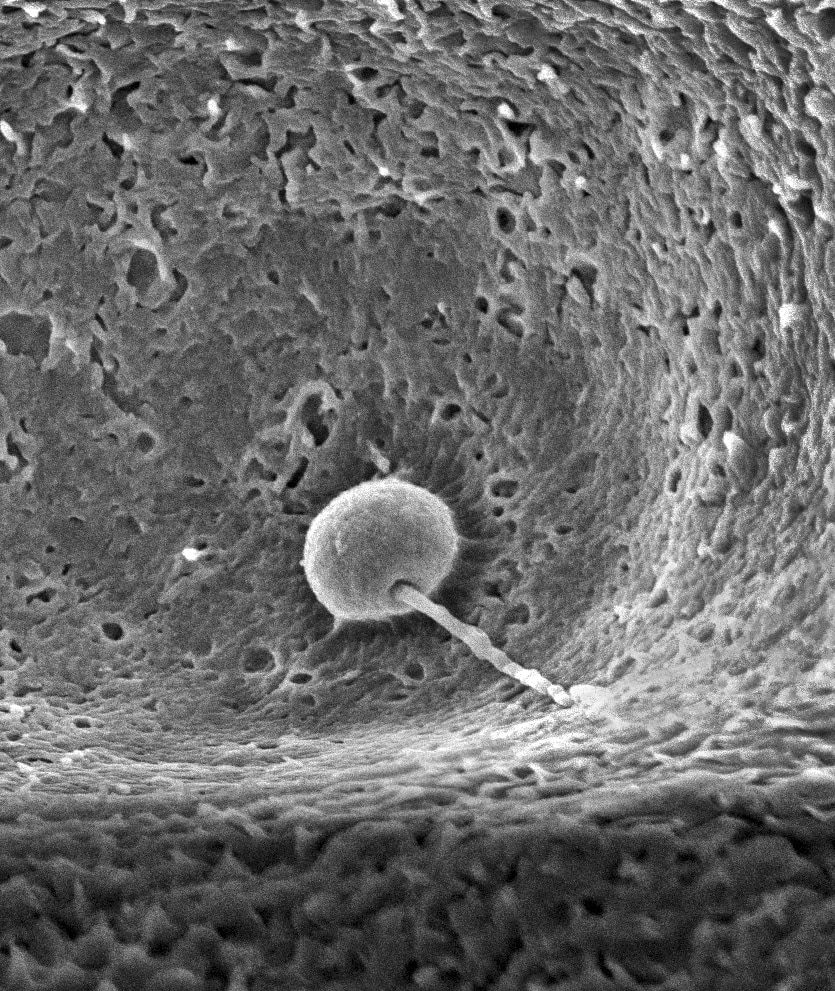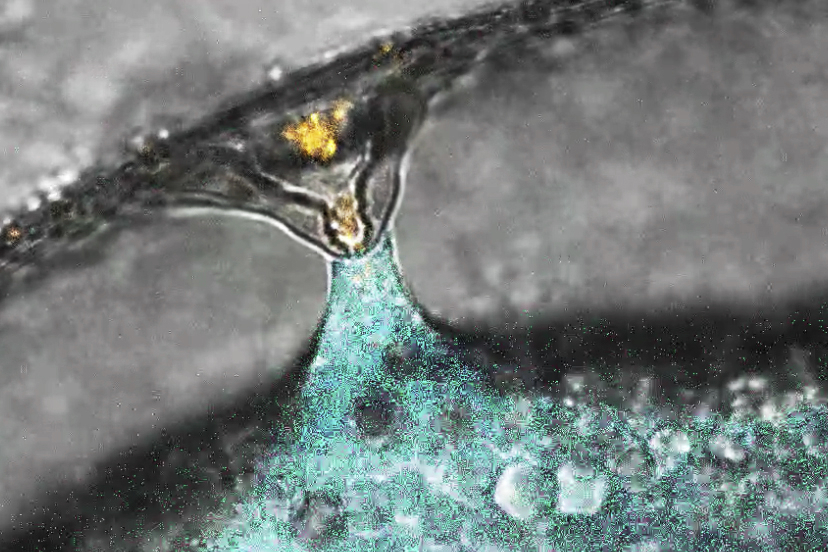tongits go Sperm and egg come together like a key in a lock – new research
 This microscope image provided by Osaka University and the Research Institute of Molecular Pathology in October 2024 shows mouse eggs, marked in red and green, and sperm, marked in blue. (Yonggang Lu/Osaka University/IMP via Associated Press)
This microscope image provided by Osaka University and the Research Institute of Molecular Pathology in October 2024 shows mouse eggs, marked in red and green, and sperm, marked in blue. (Yonggang Lu/Osaka University/IMP via Associated Press)
How a sperm and an egg fuse together has long been a mystery.tongits go
New research by scientists in Austria provides tantalizing clues, showing fertilization works like a lock and key across the animal kingdom, from fish to people.
“We discovered this mechanism that’s really fundamental across all vertebrates as far as we can tell,” said co-author Andrea Pauli at the Research Institute of Molecular Pathology in Vienna.
Article continues after this advertisementThe team found that three proteins on the sperm join to form a sort of key that unlocks the egg, allowing the sperm to attach. Their findings, drawn from studies in zebrafish, mice, and human cells, show how this process has persisted over millions of years of evolution. Results were published Thursday, October 17, in the journal Cell.
FEATURED STORIES TECHNOLOGY vivo launches V40 Lite with 5000mAh battery covered by 50-month warranty, starts at Php 13,999 TECHNOLOGY Galaxy Buds3 Pro: Delivering tailored sound wherever you go TECHNOLOGY Very mindful, very intuitive: ASUS’ most superior AI PC yet, the Zenbook S 14, empowers you to achieve moreREAD: Human sperm count dwindling, penis shrinking at alarming rate, scientist warns
Scientists had previously known about two proteins, one on the surface of the sperm and another on the egg’s membrane. Working with international collaborators, Pauli’s lab used Google DeepMind’s artificial intelligence tool AlphaFold — whose developers were awarded a Nobel Prize earlier this month — to help them identify a new protein that allows the first molecular connection between sperm and egg. They also demonstrated how it functions in living things.
Article continues after this advertisement
 This microscope image provided by the Research Institute of Molecular Pathology in October 2024 shows human sperm. (IMP via Associated Press)
This microscope image provided by the Research Institute of Molecular Pathology in October 2024 shows human sperm. (IMP via Associated Press)
It wasn’t previously known how the proteins “worked together as a team in order to allow sperm and egg to recognize each other,” Pauli said.
Article continues after this advertisementScientists still don’t know how the sperm actually gets inside the egg after it attaches and hope to delve into that next.
Article continues after this advertisementREAD: Dutch court orders sperm donor to stop after 550 children

 This electron microscope image provided by the Research Institute of Molecular Pathology in October 2024 shows a zebrafish sperm bound to the sperm-entry site of a zebrafish egg. (IMP via Associated Press)
This electron microscope image provided by the Research Institute of Molecular Pathology in October 2024 shows a zebrafish sperm bound to the sperm-entry site of a zebrafish egg. (IMP via Associated Press)

 This microscope image provided by the Research Institute of Molecular Pathology in October 2024 shows the fertilization of a zebrafish (Danio rerio) egg by a sperm, marked in orange. (IMP via Associated Press)
This microscope image provided by the Research Institute of Molecular Pathology in October 2024 shows the fertilization of a zebrafish (Danio rerio) egg by a sperm, marked in orange. (IMP via Associated Press)
Eventually, Pauli said, such work could help other scientists understand infertility better or develop new birth control methods.
Article continues after this advertisementThe work provides targets for the development of male contraceptives in particular, said David Greenstein, a genetics and cell biology expert at the University of Minnesota who was not involved in the study.
The latest study “also underscores the importance of this year’s Nobel Prize in chemistry,” he said in an email.
Subscribe to our daily newsletter
